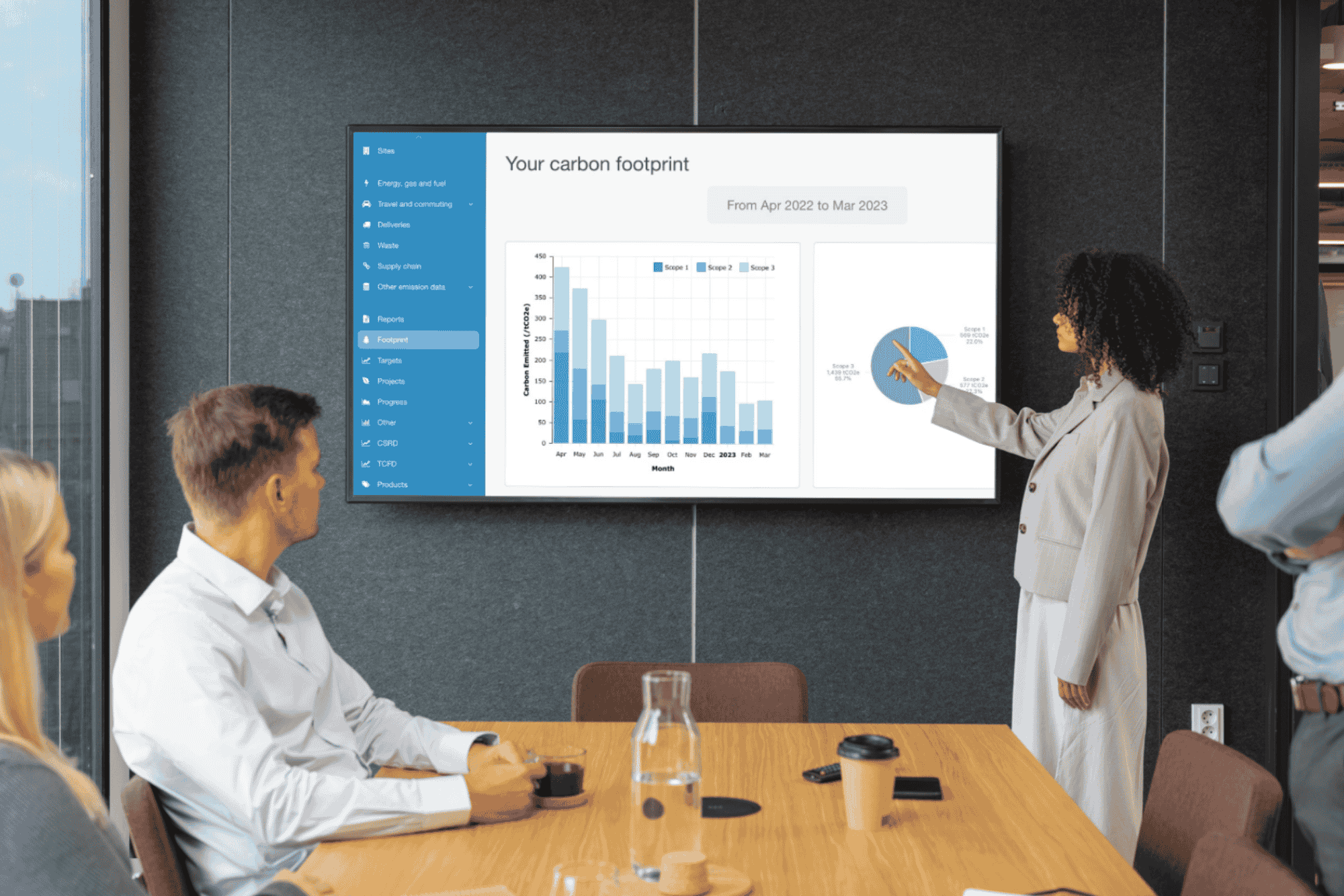Sustainability glossary
Corporate Sustainability from A to Z
Whether you’re new to corporate sustainability or an expert looking to refresh your knowledge, this glossary will help you decode its most frequently-used concepts. For deep-dive explainers and guides, head to our Resources page.
Sustainability Glossary
The Basics
Greenhouse Gases (GHG)
Carbon Footprint
Emissions Factor
Upstream
Downstream
Things that happen after you deliver a product (like customers using or throwing it away).
Value Chain
Scope 1 Emissions
Direct emissions from things your company owns or controls (like boilers or company cars).
Scope 2 Emissions
Indirect emissions from the electricity or heat your company buys.
Scope 3 Emissions
All other indirect emissions in your value chain, like suppliers, business travel, and customer use.
Net Zero
Reducing your emissions as much as possible and offsetting the rest to get to “zero” overall.
Carbon Neutrality
Offsetting all your emissions so your activities add “zero” net CO₂ to the atmosphere.
Climate Positive
Going beyond net zero by removing more CO₂ than you produce.
Residual Emissions
The small amount of emissions left over after you’ve reduced as much as possible.
Decarbonisation
Cutting down carbon emissions as much as possible.
Carbon Intensity
The amount of CO₂ emitted for each unit of output (like per product or per £1 earned).
Tones of CO₂ (tCO₂)
Short for tonnes of CO₂ equivalent. It converts all greenhouse gases (like methane and nitrous oxide) to CO₂ for ease of comparison.
Measurement keywords
These keywords describe how we measure and calculate carbon emissions or a carbon footprint.
Life Cycle Assessment (LCA)
Adding up the environmental impact of a product from start to finish.
GHG Protocol
The world’s most widely used system for measuring and reporting emissions.
Carbon Disclosure Project (CDP)
A global system where companies report their environmental data to help investors and customers make decisions.
PCAF Standard
Activity-based Approach
Estimating emissions using real-world data like miles driven or litres of fuel.
Spend-based Approach
Estimating emissions based on how much money you spent.
Cradle-to-Gate
Measuring a product’s environmental impact from raw materials to when it leaves the factory.
Cradle-to-Grave
Measuring a product’s environmental impact from raw materials all the way to disposal.
Double Materiality Assessment (DMA)
Looking at sustainability from two angles: how the environment affects your business and how your business affects the environment.
Absolute Target
A goal to cut total emissions by a set amount (e.g., 50% by 2030).
Intensity Target
A goal to cut emissions per unit of output (e.g., per product made or £ earned).
Energy Intensity
The amount of energy used per unit of output (like per m² of building space or per product).
Action Keywords
Offsetting
Paying for projects (like planting trees) that reduce or remove CO₂ to balance out your own emissions.
Insetting (Carbon Insetting)
Investing in carbon reduction projects within your own supply chain (instead of offsetting elsewhere).
Renewable Energy Certificates (RECs)
Certificates proving you’ve bought renewable electricity.
Power Purchase Agreement (PPA)
A long-term deal to buy renewable electricity directly from a producer.
Circular Economy
A way of designing products and systems so materials are reused and waste is avoided.
Carbon Capture & Storage (CCS)
Technology that traps CO₂ and stores it underground so it doesn’t reach the atmosphere.
Energy Efficiency
Using less energy to get the same job done (like LED bulbs or better insulation).
Demand-Side Management
Adjusting when and how energy is used to cut peak demand and emissions.
Nature-based Solutions
Protecting or restoring ecosystems (like forests or wetlands) to absorb CO₂.
Reporting
Science-Based Targets initiative (SBTi)
Global Reporting Initiative (GRI)
A global standard for sustainability reporting, covering environmental and social impacts.
IFRS Sustainability Standards (ISSB)
New global rules for sustainability reporting, merging climate and financial information.
Task Force on Climate-related Financial Disclosures (TCFD)
A global standard for reporting climate risks and how a company is managing them.
Energy Savings Opportunity Scheme (ESOS)
Streamlined Energy and Carbon Reporting (SECR)
Carbon Reduction Plan (CRP)
A document showing how an organisation will cut its carbon emissions (required for some UK public contracts).
Procurement Policy Notice 06/21 (PPN 06/21)
Corporate Sustainability Reporting Directive (CSRD)
A new EU law requiring detailed sustainability reporting for large companies.
Sustainable Finance Disclosure Regulation (SFDR)
An EU rule requiring financial firms to share how green their investments really are.
EU Taxonomy
A list of activities the EU says count as environmentally sustainable.
Environmental Product Declaration (EPD)
CIBSE Technical Memorandum 65 (TM65)
Voluntary Sustainability Reporting Standard for non‑listed SMEs (VSME)
More about enistic

Why enistic

Our news

